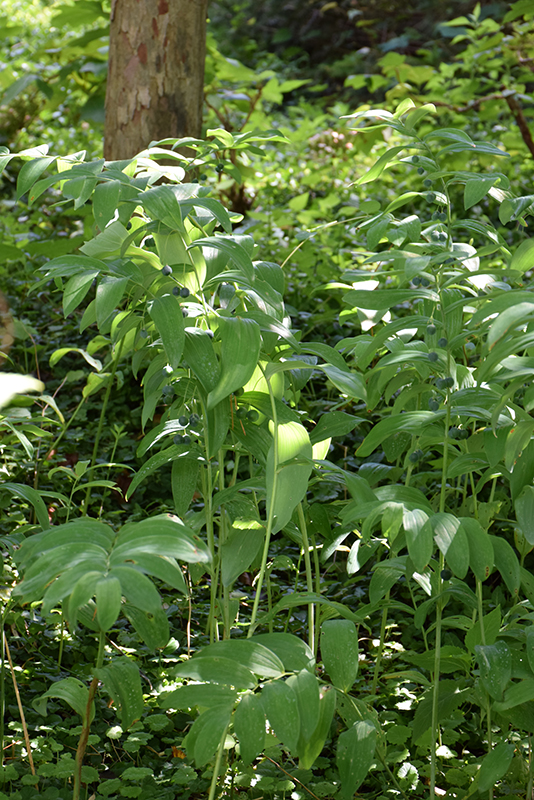Plant Finder
* This is a "special order" plant - contact store for details
Height: 5 feet
Spacing: 20 inches
Sunlight:
![]()
![]()
Hardiness Zone: 2b
Other Names: Great Solomon's Seal, P. biflorum var. commutatum
Description:
A shade loving perennial featuring arching stems of gracefully hanging clusters of white and green bell flowers in late spring, followed by indigo berries in fall; elegant mid green pinnate leaves turn shades of yellow in fall; perfect for woodland areas
Ornamental Features
Smooth Solomon's Seal features dainty lightly-scented nodding white bell-shaped flowers with creamy white overtones and lime green tips dangling from the stems in late spring. Its glossy pointy pinnately compound leaves emerge chartreuse in spring, turning green in color. As an added bonus, the foliage turns a gorgeous yellow in the fall. The fruits are showy indigo drupes displayed from late summer to late fall.
Landscape Attributes
Smooth Solomon's Seal is a dense herbaceous perennial with a shapely form and gracefully arching foliage. Its medium texture blends into the garden, but can always be balanced by a couple of finer or coarser plants for an effective composition.
This is a high maintenance plant that will require regular care and upkeep, and is best cleaned up in early spring before it resumes active growth for the season. Gardeners should be aware of the following characteristic(s) that may warrant special consideration;
- Suckering
Smooth Solomon's Seal is recommended for the following landscape applications;
- Mass Planting
- General Garden Use
- Groundcover
- Naturalizing And Woodland Gardens
Planting & Growing
Smooth Solomon's Seal will grow to be about 5 feet tall at maturity, with a spread of 24 inches. When grown in masses or used as a bedding plant, individual plants should be spaced approximately 20 inches apart. It has a low canopy with a typical clearance of 2 feet from the ground. It grows at a medium rate, and under ideal conditions can be expected to live for approximately 10 years. As an herbaceous perennial, this plant will usually die back to the crown each winter, and will regrow from the base each spring. Be careful not to disturb the crown in late winter when it may not be readily seen!
This plant does best in partial shade to shade. It prefers to grow in average to moist conditions, and shouldn't be allowed to dry out. It is not particular as to soil pH, but grows best in rich soils. It is highly tolerant of urban pollution and will even thrive in inner city environments. This species is not originally from North America, and parts of it are known to be toxic to humans and animals, so care should be exercised in planting it around children and pets. It can be propagated by division.
* This is a "special order" plant - contact store for details
A NetPS Plant Finder tool

